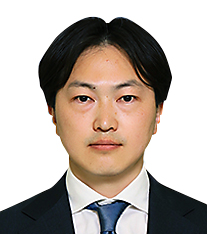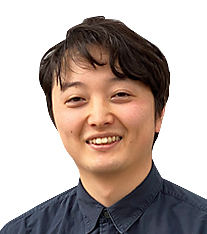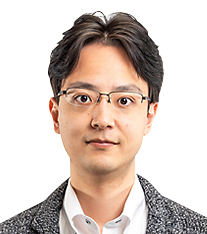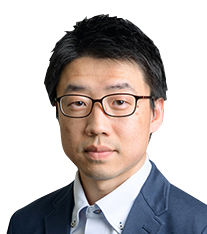- JST Home
- /
- Strategic Basic Research Programs
- /
 PRESTO
PRESTO- /
- project/
- Pioneering the Synergy of Information and Physics Connected by Optics and Photonics/
- [Photonics Synergy] Year Started : 2024
[Photonics Synergy] Year Started : 2024
Akifumi Asahara
Development of multifunctional spatiotemporal coherent spectroscopy technique using optical frequency combs
Grant No.:JPMJPR24L1
Researcher
Akifumi Asahara

Associate Professor
Graduate School of Informatics and Engineering
The University of Electro-Communications
Outline
In this research, I will develop innovative spatiotemporal coherent spectroscopy technique by freely manipulating multi-optical frequency combs, which are known as next-generation optical technology. By establishing highly functional and controllable optical measurement and control techniques based on well designed time and space modes of light, I will aim to create new fundamental method useful for development of quantum informatic devices and others.
Daisuke Ishikawa
Optimization of biomolecule detection by mechanical tuning of chiral surface plasmon fields
Grant No.:JPMJPR24L2
Researcher
Daisuke Ishikawa

Junior Associate Professor
Institute of Integrated Research
Institute of Science Tokyo
Outline
MicroRNAs, which are short RNAs of only two dozen bases, are deeply involved in the genes of disease-causing viruses. The development of a method to detect microRNAs in extremely small amounts will enable the early detection of diseases and a simple and accurate diagnosis. This project aims to create an optical sensor equipped with a chiral plasmon field using structural DNA nanotechnology. Precise mechanical tuning of the chiral plasmon field of the optical sensor at the two-dimensional interface will establish a novel, highly selective, and ultrasensitive RNA detection method.
Takuya Ishida
Realization of Giant Nonreciprocal Optical Response through Surface Lattice Resonance
Grant No.:JPMJPR24L3
Researcher
Takuya Ishida

Associate Professor
Center for Optical Research and Education
Utsunomiya University
Outline
Traditionally, achieving nonreciprocal optical responses to unpolarized visible to near-infrared light at room temperature and under low magnetic fields (<1 T) has been challenging due to the fabrication complexity of magneto-chiral structures and their inherently weak magneto-chiral effects. In this study, I will employ chiral shaping techniques on magneto-optical materials to fabricate plasmonic magneto-chiral nanostructures with an optical antenna effect. Furthermore, by fabricating arrays of these nanostructures and leveraging the enhancement of optical responses via surface lattice resonance, this study aims to achieve a significantly amplified nonreciprocal optical response.
Jun Ishihara
Creation of functional spin textures using light
Grant No.:JPMJPR24L4
Researcher
Jun Ishihara

Assistant Professor
Graduate School of Engineering
Tohoku University
Outline
In this project, I will establish a novel media conversion technology platform for light and spin textures that surpasses conventional limitations by fully utilizing advanced optical functionalities such as orbital angular momentum, spatial structure in light waves, optical interference amplification, frequency-space conversion, and programmable polarization control. By demonstrating the functionality of spin textures, including continuous-media-type physical reservoir computing, I aim to achieve technological innovation in high-speed, high-capacity processing that leverages the scalability of light and the unique properties of complex spin textures.
Daiki Okazaki
Development of an optical synthesizer spanning from infrared to terahertz
Grant No.:JPMJPR24L5
Researcher
Daiki Okazaki

Assistant Professor
Institute for Chemical Research
Kyoto University
Outline
By exploring the physics driven by optical electric fields, ultrafast optoelectronic devices operating in the optical frequency range are expected to be realized. This research focuses on the development of infrared laser light sources and their measurement techniques that enable precise waveform control. In this research, I will develop a broadband optical field synthesizer spanning from the infrared to terahertz regions by advancing laser phase control and amplification techniques for mid-infrared femtosecond lasers, utilizing novel mid-infrared laser materials such as Cr:ZnS and Fe:ZnSe.
Takaaki Kasuga
Development of dispersal sensor devices using plant-derived photonic structures
Grant No.:JPMJPR24L6
Researcher
Takaaki Kasuga

Assistant Professor
SANKEN
The University of Osaka
Outline
Sensor devices are essential components to collect environmental information and connect the physical space and the cyber space. By installing a large number of sensor devices, it becomes possible to collect and utilize detailed environmental information. In this project, I will develop a novel sensor device that combines eco-friendly materials, sensors, and optical systems to achieve both hyper-dense installation and sustainability.
Rai Kou-Takahashi
Exploring χ(2)-χ(3) hybrid nonlinear optics by transfer printing integration
Grant No.:JPMJPR24L7
Researcher
Rai Kou-Takahashi

Chief Senior Researcher
Photonics-Electronics Integration Research Center
National Institute of Advanced Industrial Science and Technology (AIST)
Outline
Progress of wavelength conversion devices based on nonlinear optical effects has enhanced efficiency and integration density with each successive generation. The significant developments include improvements in nonlinear optical crystals, adoption of the quasi-phase matching (QPM) method, higher efficiency by using waveguides, and the arrival of TFLN wafers. In this study, aiming to suppress the phase mismatch caused by structural fluctuation of TFLN waveguides, this project will develop a χ(2)-χ(3) hybrid chiplet-integrated nonlinear optical devices by utilizing high-precision SiPh integration and our unique heterogenous thin-film transfer technologies.
Yong Joon Choi
Development of spectroscopic image sensor without optical components
Grant No.:JPMJPR24L8
Researcher
Yong Joon Choi

Associate Professor
Graduate School of Engineering
Toyohashi University of Technology
Outline
This project aims to develop a filter-free spectroscopic sensor that requires no optical components, leveraging silicon’s optical absorption properties. The sensor’s output currents will be converted to spectra using machine learning algorithms. Additionally, this project will create a compact spectroscopic imaging system capable of acquiring three-dimensional optical information (time, space, and spectrum) with a single device by arraying a filter-free sensor with the CMOS process. This system will have broad applications, including multi-fluorescence imaging, virus detection, and plant spectral analysis.
Nobuyuki Matsuda
Deterministic light localiztion enables high-density optical and quantum devices
Grant No.:JPMJPR24L9
Researcher
Nobuyuki Matsuda

Professor
Research Institute of Electrical Communication
Tohoku University
Outline
Optical crosstalk between adjacent waveguide cores limits the integration density of photonic transmission lines. In this research, we develop a waveguide array structure that blockes crosstalk using lightwave localization. Further, by applying this structure, we aim to achieve high-density integration of optical quantum device circuits and increase the number of cores in multi-core optical fibers. This will contribute to developing optical and quantum device technologies that enhance information processing capabilities and telecommunication speeds toward future green information systems.
Ryo Mori
Pioneering light-induced topological spin excitonics
Grant No.:JPMJPR24LA
Researcher
Ryo Mori

Assistant Professor
Department of Physics
University of Maryland
Outline
With the advancement of optical science and technology, it has become possible to realize new material phases in non-equilibrium states and achieve ultrafast control, which were previously unattainable with conventional material design. In this project, I aim to control the spin information and excitonic interactions of the recently discovered ‘excitonic topological states,’ a new light-induced state that appears in topological insulators, by harmonizing light and material structures. Along with exploring novel non-equilibrium quantum phases, I will pursue new investigations into applications for spintronics, quantum information, and device technology.













